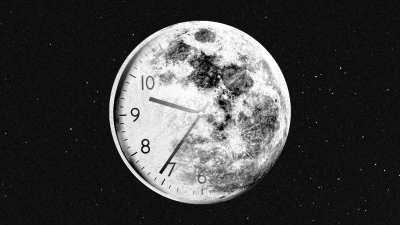
The European Space Agency announced that space organisations around the world are considering how best to keep time on the moon. The need is for an internationally accepted lunar time zone.
How do you keep track of time on the moon? What is the lunar reference point? The moon needs to be given its own time zone, the European Space Agency announced recently. As the race to the moon begins and more and more lunar missions are getting deployed, it is become, pertinent to come with a common refer time.
The European Space Agency announced that space organisations and the world are considering how best to keep time on the moon. The idea took out at a meeting in the Netherlands last year in such the participants agreed on the imminent need to set up “ a common lunar reference time” Pietro Giordana, a navigation system engineer of the space agency said.
“A joint international effort is now being launched towards achieving this, “Giordano said in a statement.
As of now, a moon missions on the time of the country that is operating the spacecraft. The need is for an internationally accepted lunar time zone. This will be easier for all space-faring nations as mare countries and even private companies are aiming for the moon. The NASA is also getting art to send astronauts there.
The question of time confounded NASA as it was designing and building the international Space Station, fast approaching the 25th anniversary of the launch of its first pierce. The space station doesn’t have its a time zone, But it runs on Coordinated Universal Time, or UTC which is meticulously based on atomic clocks. This ensures in splitting the time difference between NASA and the Canadian Space Agency, and the other partnering space programmes in Russia, Japan and Europe.
Debate is going on among the international team looking into lunar time on whether a single organisation should set and maintain time on the moon.
When it comes to keeping time on the moon, there are technical issues involved. One being that clocks run faster on the moon than on Earth, gaining about 56 microseconds each day, according to the space agency. Also, ticking occur differently on the lunar surface than in bar orbit.
The lunar time will have to be practical for astronauts there, noted the space agency’s Bernhard Hufenbach. NASA is gearing up for its first flight to the moon with astronauts in more than a half-century in 2024, with a lunar landing as early as 2025.
“This will be quite a challenge” with each day lasting as long as 29.5 Earth days, Hufenbach said in a statement. “But having established a working time system for the moon, we can go on to do the same for other planetary destination.” Mars standard Time, anyone?
Picture Credit : Google




